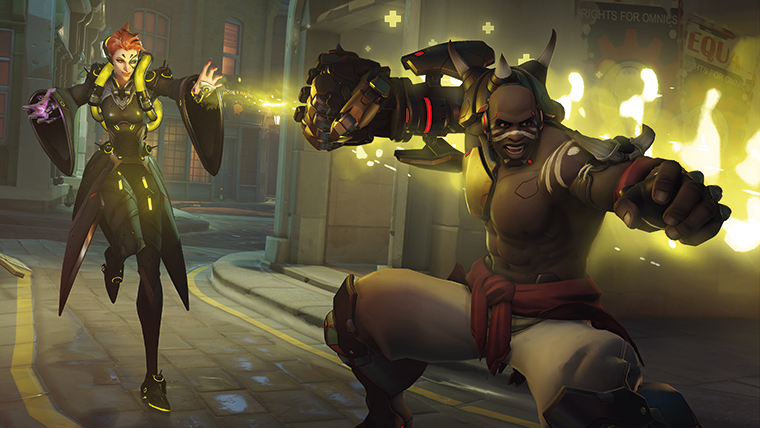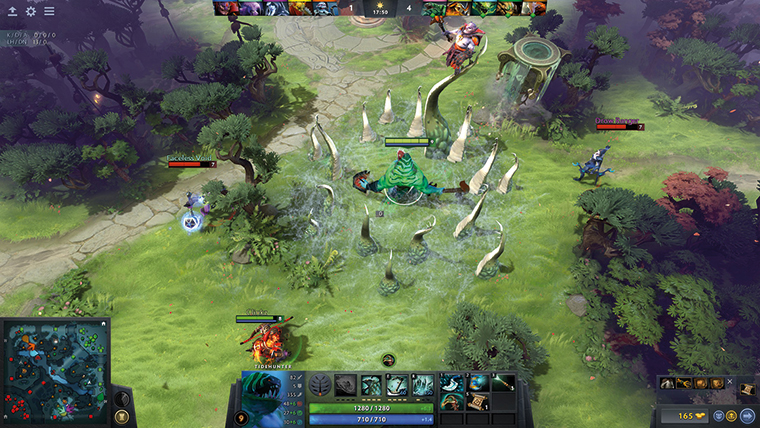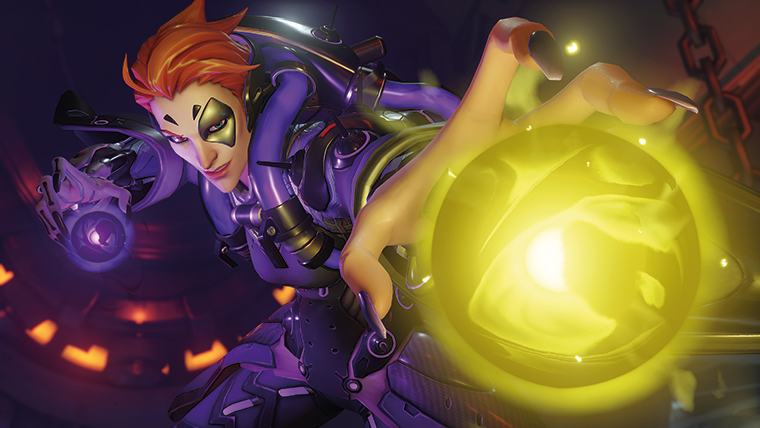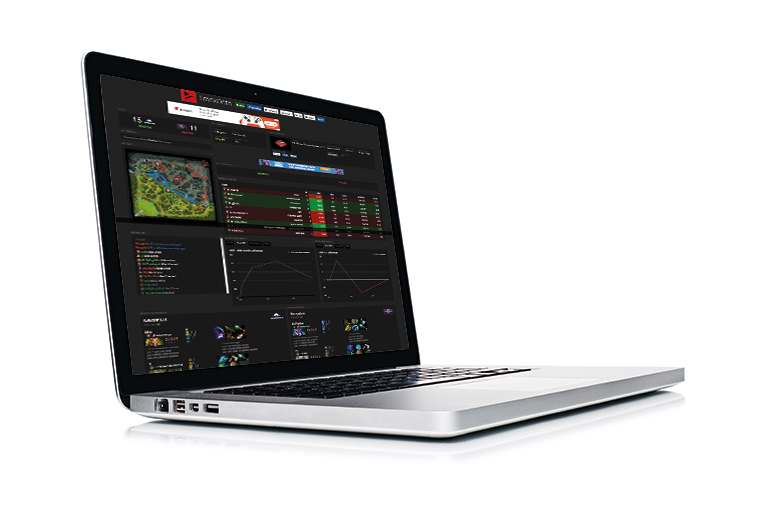Sabina Hemmi, Elo Entertainment: “When I see data I just see opportunity”

Sabina Hemmi is co-founder and CEO of Elo Entertainment, the company behind gaming data sites Dotabuff, Overbuff, Fortbuff, Artibuff and Trackdota. She talks to FEED about being a tech entrepreneur, the beauty of data andnegotiating sexism in the games industry
FEED: How did you start your company, Elo Entertainment?
Sabina Hemmi: I’ve always played video games and been involved in esports, as a participant and player; ever since 2000, when I attended my first esports event and caught the online gaming bug. For five years I led a top World of Warcraft (WoW) guild, Blood Legion.
I studies computer science at the University of Texas, Dallas, but I dropped out and I was working in tech and finance for a while. Then I had a weird life situation and I quit my job and moved. I was young enough that I didn’t have an established career to worry about. I needed a job and I had all of this expertise in esports, so eight years ago I ended up starting a company with two other people, Jason Coene and Trevor Schmidt.
The idea behind Elo Entertainment was really simple. We noticed League of Legends was just coming out at that time and we knew it was going to be a huge game. It was going to be an esport.
FEED: What was it that tipped you off to how big LoL was going to be?
Sabina Hemmi: In alpha and beta, people played and liked it. Riot at that time was an unknown publisher and was running it like a tech company, which was hot for that time. We noticed that when players started playing it, they seemed to really enjoy it. The growth wasn’t as instantaneous as, say, Fortnite, but League was intentionally trying to appeal to core gamers, which I think is, to some extent, necessary for creating an authentic esport. We knew the data existed and nobody was doing anything with that data. We said, “Let’s just do something on the web this week in beta.”

Grasping data The Elo websites collect and offer up massive amounts of game data for Overwatch, Dota 2, Fornite and Artifact
We also knew from our World of Warcraft guild that really good players have data tools. In World of Warcraft, we would write our own simulations, we would write our own odds, and for that time period that was not very common. Really motivated, competitive gamers do that. We thought, could we take some of the tools that we would make for ourselves and apply it to League of Legends, and then take that data and democratise it? You’re looking to ideally make players feel empowered. You want to show that certain gaming strategies are more successful or less successful than others.
Also at that time, you couldn’t get that kind of good game data anywhere. So there was a little bit of – I don’t know how to describe it – almost a journalism aspect about it. We were exposing this new data. Really good players would have instincts: “This feels really good. This feels really bad”; but they couldn’t validate that with data.

FEED: Did you ever feel at a loss with what to do with all that data?
Sabina Hemmi: It’s funny. At the time, I didn’t think of myself as a data person. Now, obviously, I do. I’ve established myself working with data for a while. When I see data I just see opportunity. It was never like we saw new data and we thought, “I don’t know what this is good for.” It was always more that we saw data and had ideas.
Even from a really young age, if you showed me a number, my first question was, ‘Where did that number come from?’
Back then people were asking, “What is actually good? How do you measure how somebody is good? How do you quantify that? Is it better for you to play a character that you’re personally really good on, or is it better for you to play a character that is the most strong right now?” I think as I’ve gotten more intertwined with the data, and have made it a career, I have realised that I’ve always been a data person. I just didn’t think of myself as one.
FEED: When did you “wake up to data”?
Sabina Hemmi: Even from a really young age, if you showed me a number, my first question was, “Where did that number come from?” Which to me is the mark of a data person. I also think in a data visualisation way. Numbers and data are just a common way that I use to express things. I would rather express how I feel emotionally by showing you a graph of what an emotional journey looks like. That’s an easier way for me to describe or present an idea, then trying to use words or trying to show you a single number. I think data visualisation is an extremely powerful communication tool.
FEED: How much does data match up with instinct when you look at how gamers actually play? How good a judge are people of their own skills?
Sabina Hemmi: That’s a hard question, because now everybody instantaneously has the data. It’s hard to measure the difference because people are perpetually validating their instincts and validating their ideas naturally as they look at data, especially if they are analytical, smart
game players.
When we were first uncovering pro player data, one of the things I saw that I found really interesting was that there would be a new player on the scene and that player would be really famous for playing a specific character. But what we would see when looking at the data, is that they would be really bad at playing against that character in the same way. You wonder why would they be bad at that? I have a theory that they are so good with the character, that they know how they would counter everything. They’re so focused on it, that they almost become a little scared of the capabilities of the character.

For some pro players, that’s a hard thing. It’s their signature character and they are actually awful at playing against it, when they should be good because they know that character very well.
FEED: How does data collection in esports compare with that in
traditional sports?
Sabina Hemmi: I think the digestion of the data is somewhat similar. But the data is less accessible in traditional sports. They have developed great data collection mechanisms, but a lot of them have taken years and years to develop these heavy data visualisations. They do things like measure a player’s body movements and position and things like that in an automated way, and that just takes a ton of technology to do. Not to say that esports doesn’t take tech, but the initial accessibility is a lot easier for us.
It takes thick skin, it takes a lot of tolerance and patience to be a woman in esports
We can see every single input that a player has in a match. We gather billions of data points for a single Dota 2 (Defence of the Ancients) match. Then there’s a million Dota 2 matches in a day. There have been billions of Dota 2 matches over the lifetime of the game. The initial data gathering of it is a lot easier. But a lot of the adoption, interpretation and digestion of the data, I don’t know if that’s different from traditional sports. What’s unique about esports is that because the data collection is so much more accessible, normal players can see it. If you played a pick-up game of basketball with your friends in the park, you wouldn’t expect a month later to be able to see all the data, the scoring details, from that game. But in esports we can do that.
On the surface we’re looking for game insights and reporting things, but in the long-term I hope that we’re preserving history and, on an individual level, we’re preserving your memories.
I have this great memory of the international WoW tournament one year, and a pro game went really long, over an hour and a half. After a while, everyone was asking, “How long is this game going to go on?” I was sitting in the stadium, watching people go to my website, asking questions like “What is the longest pro game ever?” But we also have a personal records page for every player so everybody was asking, “How does this compare to my personal longest match ever? Is it longer than this?”
I could see them discussing the match with their friends: “Do you remember how we used this strategy, and it went on forever?” People can see the place where all those hours put into a game can get distilled down. They can revisit the individual memories that they had when playing. Everybody has fond memories, and being able to revisit them in an easily digestible way is a gift that you don’t always get in traditional sports.
FEED: Do you work with any other tech vendors or have you developed all your data technology internally?
Sabina Hemmi: We will look at other vendors, but I think because we’re a data company, we’re a little wary of vendors that don’t reveal how they get their information. There are a lot of aspects to esports data, and it’s very much still the Wild, Wild West. There’s not necessarily a warranty on how good data is, how well it was cleaned. A lot of the companies that are currently trying to sell or market themselves for the esports data are really focused on getting the biggest number they can, because that helps get them business. They’re incentivised to inflate numbers, rather than to use authentic numbers.

Data of the ancients Hemmi believes data is more than just facts. To her, data is history and a way to connect to the past
For now, it makes sense for us to use internal tools and create things ourselves. In the long-term, I hope that space gets cleaned up. I’m not opposed to considering other options or maybe we’ll have our own option where we can share some of that data with the industry.
FEED: Esports and gaming have not been great about diversity and the participation of females. What has been your experience as a female gamer and entrepreneur in the gaming space?
Sabina Hemmi: There aren’t very many female entrepreneurs, right? I think at times it’s been lonely, but when I look at where we are today versus ten years ago or 20 years ago, when I started being active in esports, it’s got so much better. To me, I always feel like I have no choice but to be an optimist about these things because if I wasn’t an optimist, I’d be thinking: “What am I doing with my life?” But it has certainly been challenging.
We said, ‘Let’s just do something on the web this week in beta’
The interesting thing is that esports does have more women now, and at every event I see more women. But as I get more successful and I get into more important meetings, I am always, always the only woman. It’s a short list of female founders in esports. It’s a short list of female founders in tech, and it’s a really short list
of the intersection between tech and esports that has female founders.
I think my company is also unique in that we’ve been around for so long. We’ve been profitable. It’s not a common situation, so it can feel pretty lonely. When we launched this company, I was somewhat well-known in World of Warcraft because of my WoW Guild. I never hid the fact that I was a woman, but for the first few years, I wasn’t out there. I wasn’t out in the community, I wasn’t talking to people. I wasn’t doing interviews about being a woman. In the years of growing my company, I was head down, working hard. I wanted my product to speak for itself, and I was worried that if people knew a woman was behind, say, DotaBuff, which is a really popular website, then the conversation would be all about what a woman is doing in the industry, rather than the product itself.
I’ve spoken to some female founders in esports now, and it feels like they get to be a lot geekier than I could because the times have changed. I’m grateful that they have that ability. But everything you hear is true. It takes thick skin, it takes a lot of tolerance and patience to be a woman in esports because there are challenges that are trickier or different to those that most male founders have to deal with, because in this industry male is the default. Being a woman in a male-dominated industry means that you’re always going to be seen as different first.
I feel like this industry is not always friendly. On a personal level, I had a rough childhood where I was abused. I think that meant that I left childhood thinking that certain behaviours were more normal than I would have if I’d had a more ordinary childhood. I really think that the fact that I was abused primed me for dealing with more bullshit in this industry, because I probably would have got out of this business a lot earlier if I’d had more self-respect! Maybe that’s a dark interpretation, but I truly believe that.
FEED: How can other people in the industry help to promote diversity
in tech?
Sabina Hemmi: One thing we did for our Overwatch site Overbuff was have a trans woman doing our social media, and she did things like retweet on Trans Visibility Day. That allowed her to create her own voice, let her be really out there, and present and visible. We saw after we hired her that our Overbuff Twitter, which served the Overwatch community, grew from 9% female to 15% female. I thought that was a really interesting case study. Just having visible women can increase the participation of women in a community like that, and I’m hopeful.
For me, I am an entrepreneur, so I’m running a business. I’m really busy, but I do try to look for opportunities to mentor women. I do look for opportunities where I can try to be a role model for other women out there because I don’t want to be the only woman at every board meeting. I want to see the industry change.
—
This article originally appeared in the August 2019 issue of FEED magazine.











